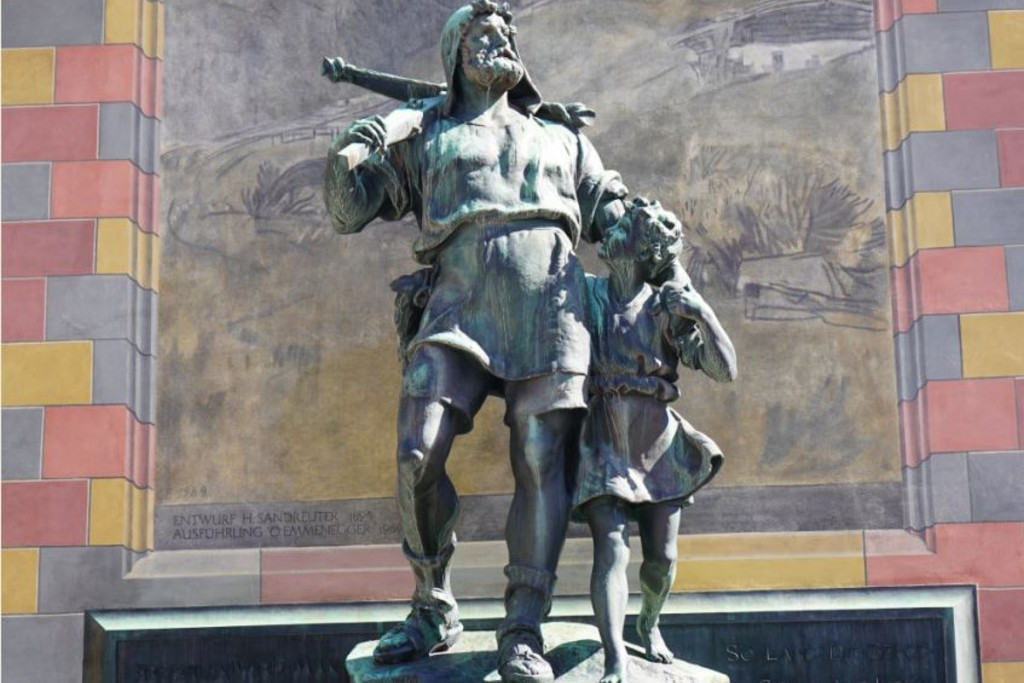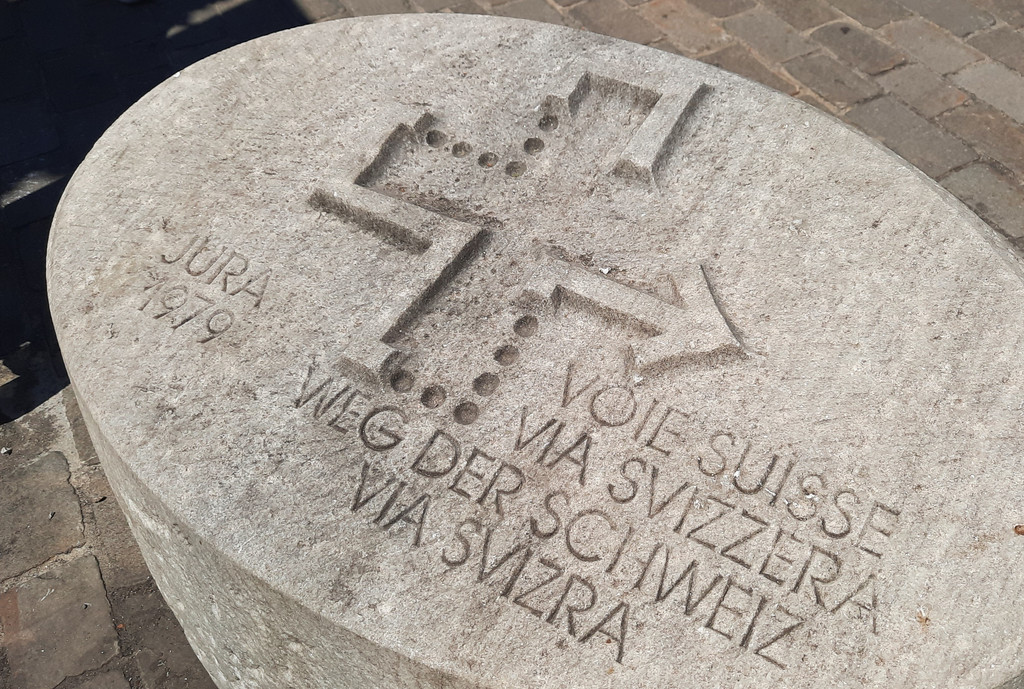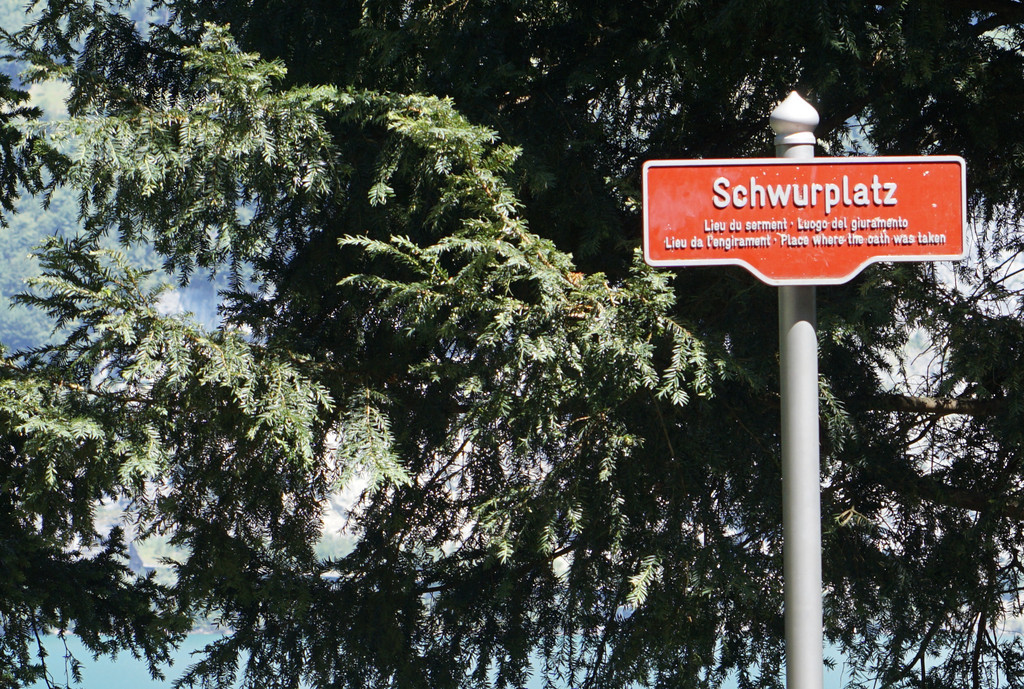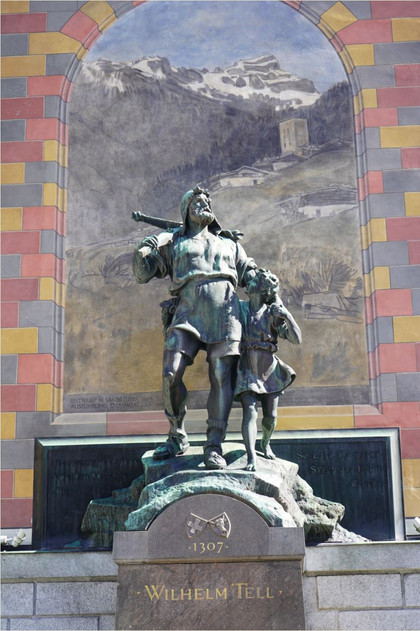This exhibition deals with other folklore as well, such as the nightmare figure of Toggeli, well-known in central Switzerland, or the Lucerne dragon stone from Mount Pilatus. At audio stations, visitors can listen to folktales told in the four national languages. “In the old days there was no Google, so people found their own ways to account for baffling phenomena,” says Schmidig Römer. Folktales had not only a historical, but also a moral or religiously edifying purpose. The early horror novel The Black Spider by 19th century Swiss author Jeremias Gotthelf is a tale expressing Christian ideals of good versus evil, tradition, custom, decency, and the God-fearing way of life.
Political function
Not just folktales, but idealisation of the land and its history characterise Switzerland and its identity building. There is the myth of the Alps as the core of the country, the “nation by choice”, and the Swiss self-perception as a nation of sturdy peasant folk. There are values like direct democracy, armed neutrality, and the humanitarian tradition. Another jewel in the crown of national identity is the Federal Charter of 1291. This document was forgotten for 500 years, but at the time of the 600th anniversary of confederation in the year 1891, the government of the day resurrected it and triumphantly declared it to be the founding document of Switzerland. This, by the way, was the first time there was a national holiday on the first of August.
“For a country that has no real territorial or language boundaries, nor a common religious denomination, nor a common culture, there is a need to find something in common. We have sought our common roots in history,” says Annina Michel, head of the Federal Charter Museum. This museum was built in 1936. The Federal Charter in its display case became a sort of Ark of the Covenant, standing for a Switzerland based on freedom and independence. It was regarded as the first Swiss constitution.
Such symbols had a definite political function, and were part of ideological efforts to keep up domestic morale during the War. In times of threat from without, the Swiss turned to thoughts of inner unity. The Federal Charter Museum played its role. There the Federal Charter was said to be “laid on the Altar of the Fatherland”. The museum can still be visited, just a few minutes’ walk from the Forum for Swiss History in Schwyz.
Not without value
In the 1970s, historical research began to reveal that the Federal Charter was not a founding document, but just an agreement to keep the peace between the valleys of Uri, Schwyz and Nidwalden. By the 1970s and 1980s, even the stories of William Tell and the Rütli Oath were being regarded as reactionary and a bar to progress, if not dismissed outright as fairytales. Yet Michel believes these legends still have their purpose.
“In scholarly discourse today, the state-supporting function of the myths, especially in the 19th century, is no longer in any doubt. The myths themselves can’t be historically authenticated. It seems the Rütli Oath never actually happened. But that doesn’t mean that the myths are without value.” These myths, as all historians agree, have been of major importance for the development of a Swiss national identity. They are no longer glorified today, but the part they played is recognised,” says Michel.
To explain the effect and meaning of these myths, the Federal Charter Museum is still in business – even if it no longer presents the Federal Charter as a sort of Holy Writ lying open on an altar. It’s now just one exhibit among many others.
see original article on swissinfo.ch















Comments